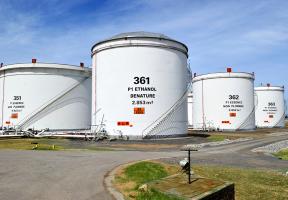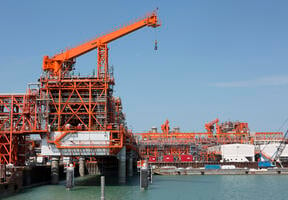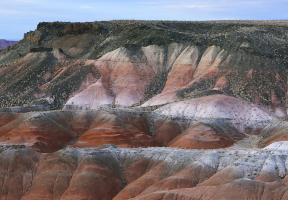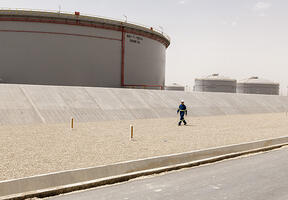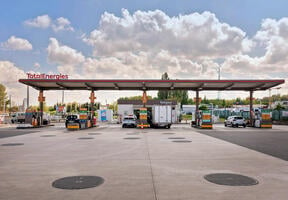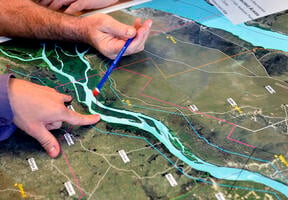How Oil and Gas Migrate
5 min read
Starting out from the source rock where they are formed, molecules, which are light, set off on an upward journey to the surface. They accumulate in porous rock and are blocked by impermeable rock, thereby creating oil and gas deposits.
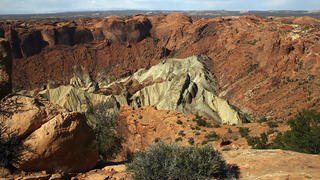
© THINKSTOCK - A salt dome acts as a cap rock, completely enclosing reservoir rock.
The Slow Rise to the Surface of Oil and Gas
The formation of hydrocarbons is a long process, but how do they manage to rise to the surface?
In the source rock, hydrocarbons are present in greater volumes under higher pressures than the initial . Little by little, they are expelled into the water-containing rocky layers located adjacent to the source rock. Because hydrocarbons are lighter than water, gas and oil rise upward by circulating between the mineral grains of the rock. This slow, constant movement away from the source rock is called migration.
Migration is a complicated process. The rate depends on the permeability of the rocks they cross and the size of the molecules: gas molecules rise more quickly than oil molecules, because they are smaller and more mobile. Some hydrocarbon molecules are prevented from moving upward, either because they dissolve in the water contained in the rock they encounter (this affects gas much more often than oil) or because they adhere to the grains that make up the rock. This phenomenon is known as migration loss. These losses can be significant, especially if the oil and gas have a long way to travel. This is why some source rock hydrocarbons will never be suitable for development.
The Formation of Deposits in Reservoir Rock, Under Cap Rock
A hydrocarbon deposit can only form in reservoir rock. Hydrocarbon molecules may accumulate in large quantities in this porous, permeable rock.
Sedimentary rock is formed of solid particles deposited in seas, oceans, lakes or lagoons. The appearance of the rock is different depending on the size of these particles: very large grains form rock consisting of gravel, small grains bond together to form sand, and the smallest grains of all form clay or mud.
There are also empty spaces within the rock that determine its porosity. The higher the percentage of space within the rock, the more porous the rock, which can contain large quantities of fluids such as water, oil or gas. Pumice is an example of a porous rock. These spaces, or pores, may be connected. Their connectivity is known as permeability, which is what allows fluids to circulate within the rock.
Not all rock is both permeable and porous. engineers look for reservoir rocks — also known as reservoirs — that combine good (large quantities of hydrocarbons) and good permeability (which makes it easy to extract these hydrocarbons because they flow unimpeded inside the rock).
However, a hydrocarbon deposit will only form if the reservoir rock is capped by a layer of impermeable rock that prevents the oil or gas from rising vertically to the surface and forms a closed space that prevents the oil or gas from rising laterally. This forms a barrier and traps the hydrocarbons. While clay and crystallized salt (evaporite) layers form the best cap rock, any rock that is sufficiently impermeable — such as highly compact carbonates — can serve as a cap rock.
Absence of Cap Rock
If the hydrocarbon molecules are not prevented from rising, they will move through the reservoir rock and cannot accumulate.
Oil or gas that reaches the surface at the end of its migration is exposed to and ambient air. This triggers complex chemical reactions that convert them into water and carbon dioxide. However, when significant quantities of hydrocarbons arrive at the surface more quickly than the final degradation process, the heaviest molecules may remain in the ground in the form of viscous, almost solid bitumen, buried at depths of a few meters. But these bitumen deposits will quickly disappear when the hydrocarbons stop arriving at the surface to replenish them.
But the process isn’t over yet — find out how a geological trap becomes an exploitable deposit.

